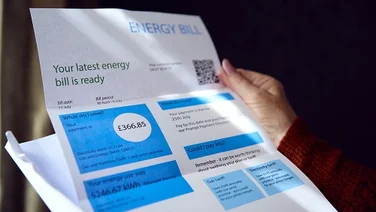- How much food is wasted in the UK annually?
- What is the most wasted food in the UK?
- How much food is wasted in the UK every day?
- Average food waste per household per day in the UK
- How much supermarket food waste is there in the UK?
- How much food is wasted around the world?
- Which country wastes the most food?
- Which country wastes the most food per capita?
- Summary
- The UK throws away around 9.5 million tonnes of food waste every year
- The UK’s total food waste could feed roughly 30 million people a year
- The consumable food we waste costs the UK about £19 billion
- Bread and potatoes are the most wasted foods in the UK
- UK food retailers spend around £51,000pa on sending food to landfill
When people think about reducing their environmental impact, it often involves switching from a car to a bike or investing in renewable energy technology, like solar panels. There are, however, much simpler ways to achieve this, like cutting food waste.
More than 8 million (8.4 million) people in the UK are in food poverty, yet we produce enough food to wipe this out and 30% of food is lost or wasted around the world every year.
If that food was given to the people who need it, we could give chronically undernourished people 10 meals a day, every day.
The UK has cut its food waste in recent years, but there’s still more that can be done, particularly in the supply chain. Before we can reach that stage, it’s best to understand more about the world’s food waste with these stats.

How much food is wasted in the UK annually?
The UK throws away around 9.52 million tonnes of food waste in a single year, according to Business Waste.
That food waste is the equivalent of filling Wembley Stadium nine times over or 4,000 olympic sized swimming pools.
This food waste doesn’t just come from households, but throughout the supply chain, restaurants, hotels, supermarkets, farms, etc all over the country.
On average, every individual person in the UK wastes around 70kg of food per year, which is the equivalent to 140 meals. Within this, households cause 70% of the UK’s food waste, throwing away 6.6 million tonnes of food, of which 4.5 million tonnes is edible.
This is incredibly high, especially as a time when 15% of all UK households were living in food insecurities/poverty in January 2024, as noted by the Food Foundation.
The UK hospitality sector alone, according to Business Waste, generates a staggering 920,000 tonnes of food, 75% of which is avoidable. Supermarkets are also generating high waste, with more than 100,000 edible food products thrown away each year.
Overall, it’s estimated that the UK’s total food waste could feed upwards of 30 million people a year.
Researchers are looking for new ways to use surplus food. For example, some experts have designed solar panels by using luminescent particles from fruit and vegetable waste. Check out: The 9 best solar panels in the UK for more information.
But there’s plenty you can do at home. Some foods can be frozen and saved for a later date, or consider batch cooking products to have for lunches if you’re travelling to the office.
Alternatively, there’s been a shift of customer habits to shopping little and often, rather than large weekly shops, so consider if this is a viable option to help cut down waste. Cost of food waste
The consumable food we waste costs the UK £19 billion. This adds up to £284 for every single person in the country.
UK households waste an estimated £14 billion worth of food every year. If you split this between all of the UK’s 28.1 million households, the average household would £470 annually on food that otherwise ends up in the bin, according to Waste Managed. Greenhouse gas emissions
The UK’s food waste emitted 18 million tonnes of greenhouse gas emissions (GHG) in 2022, as reported by WRAP.
That’s approximately 5.5% of our entire national GHG emissions – and more than Kenya, a country of 53 million people – from food that’s simply thrown away.
Eradicating these GHG emissions would be the equivalent of taking one in every five cars off the road, according to government data.
Considering the UK government has set a target for 2030 of reducing GHG levels by 68% of 1990 levels, reducing or even eliminating food waste seems like an obvious step. Our food generates a lot of emissions depending on where it’s shipped from – also known as food miles. Want to learn more? Check our page: What are ‘food miles’ and how can you reduce them?
Alternatively, read our page, Are avocados bad for the environment, and uncover the carbon footprint of this popular fruit.
What is the most wasted food in the UK?
Bread and potatoes are the most wasted foods in the UK, with an estimated 900,000 tonnes of bread thrown away every year, closely followed by potato at 700,000 tonnes.
The most thrown away food group in the country is fresh vegetables & salad, which makes up 28% of edible food waste.
Top 10 foods that contribute to food waste in the UK
These are the most wasted food types in the country, according to WRAP.
You’ll notice that potatoes are on the list twice, in different forms. Poultry and pork are also present, despite producing a high amount of emissions during their production.
1 kg of poultry and pork emits 6 kg and 7 kg of CO2e respectively.

How much food is wasted in the UK every day?
If we break down our annual waste, it accounts for a daily rate of 26,082 tonnes of food waste every day.
That’s 391 grams of food per person, per day, going straight in the bin – but that makes children partly responsible, which doesn’t seem fair.
UK adults waste 498g of food per person, per day – the equivalent of throwing away a pack of pasta every evening.
While it is fine to not eat all the food on your plate, but ask yourself, can I have the food on a different day? Or repurpose it into a different meal/recipe?
Average food waste per household per day in the UK
Households throw away 1.96kg of food per day, on average, which is equivalent to eight meals per week.
This not only is a waste of food, households are also wasting money. Food waste costs up to £470 a year and 41% of this food is thrown away because it wasn’t used in time.
Partially this is an issue within the supply chain as many products have a short shelf life. These include poultry, eggs and baked goods.
Some are good to be frozen for a period of time. According to Food Safety.gov, whole chicken and turkeys can be frozen for a whole year, while pieces can be frozen for nine months.
Fish has a much shorter freezer time, with ‘fatty fish’ (bluefish, catfish, mackerel, mullet, salmon and tuna) a small 2-3 months. Lean fish (cod, flounder, haddock, halibut and sole) is slightly longer at 6-8 months.
Twenty-eight per cent of food is wasted simply due to personal preference and another 25% goes into the bin because we’ve cooked too much.
If you want to reduce this, we’ve outlined 10 ways to reduce your food waste at home. These include meal planning, composting, batch cooking and investing in recipe boxes, like Hello Fresh.
You can also find out more about growing your own food, both indoor and outdoor. In addition to reducing waste, your monthly shopping bill will go down too.
How much supermarket food waste is there in the UK?
The retail sector wastes approximately 270,000 tonnes of food waste every year, with supermarkets being a major source of this.
This means food retailers in the UK are spending around £51,000 per year on sending food to landfill, but according to Keenan Recycling, recycling food waste could save them £7,000 a year.
The 2023 report found that 41% of UK food retailers don’t think food waste is a core priority and 36% claim they don’t recycle food waste at all.
However, the Environmental Improvement Plan 2023 means it’s now a legal requirement for companies in England to separate and recycle food waste.
Similar legislation has been in place in Scotland since 2016 for any businesses producing more than 5kg of food waste per week, and came into force in Wales in October 2023.
In light of this, many large supermarkets – including Aldi, Asda, Sainsbury’s, Tesco, Iceland, Lidl, Morrisons, Marks and Spencer and Waitrose – signed up to the Courtauld Commitment.
The aim of this initiative is to reduce food waste by 20% by 2025 and halve their food waste by 50% by 2030.
How much food is wasted around the world?
As of the end of 2023, 2.5 billion tonnes of food is lost or wasted globally each year, with one third of this occurring in the food production stage.
This equates to 40% of all food produced for human consumption goes to waste. For the average global household, this means 1.5 tonnes of food is lost or wasted each year.
It also means more than 5.8 trillion meals are wasted per year – at a total cost of £1.6 trillion, according to data from the United Nations World Food Programme.
This is especially staggering when you consider that the world produces enough food to feed all of its 8 billion people, yet 828 million people go hungry every day.
Of these 828 million, The World Food Programme estimates that over 40% are facing acute levels of hunger.
If the world’s wasted food was given to all these people, it would provide each person with 2,536 meals per year, which is seven meals a day.
Which country wastes the most food?
China wastes the most food of any country on the planet, casting aside 91 million tonnes every year, according to the World Population Review.
India closely follows, generating 68 million tonnes. For both India and China, this amount is most likely due to their vast populations.
The United States exceeds 19 million tonnes a year, but its food waste is due to it being the world’s largest consumer of food.
This is followed by Japan at 8 million tonnes and Germany and France at 6 and 5 million tonnes respectively.

Which country wastes the most food per capita?
Nigeria wastes the most food per capita, as recorded by the World Population Review, at 189kg per person, per year.
The next most-wasteful countries are Rwanda at 164kg per person, Greece at 142kg per person and Bahrain at 132kg per person.
The United Nations 2024 Food Index Report, it recommends a public-private partnership to help reduce food waste. The framework includes strategy and commitment, collaboration, outputs to deliver on targets and its impact.
On the other side of the scale, Russia tops the world rankings for the least food waste per person, followed by Slovenia, Austria, India and Belize.
Summary
- The world is not expected to meet its goal of Zero Hunger by 2030.
- According to Concern, progress on ending hunger has stalled – and in some cases reversed – since 2017.
- Food waste accounts for 5.5% of the UK’s GHG emissions.
- According to WRAP’s report on food waste, the UK still produces around 10 million tonnes of food. Since 2007, we’ve cut household food waste by 15%.
- Legislation is helping this movement, but there’s still a way to go.
- According to the Food Sustainability Index, the UK currently ranks as the twenty-seventh country in the world when measuring food loss and waste.
- Canada leads the index, followed by Italy, Germany, Japan and the Netherlands.
- If the UK and the rest of the world prioritise reducing our collective 2.5 billion tonnes of waste, we could eliminate global hunger a lot sooner than we anticipate.







